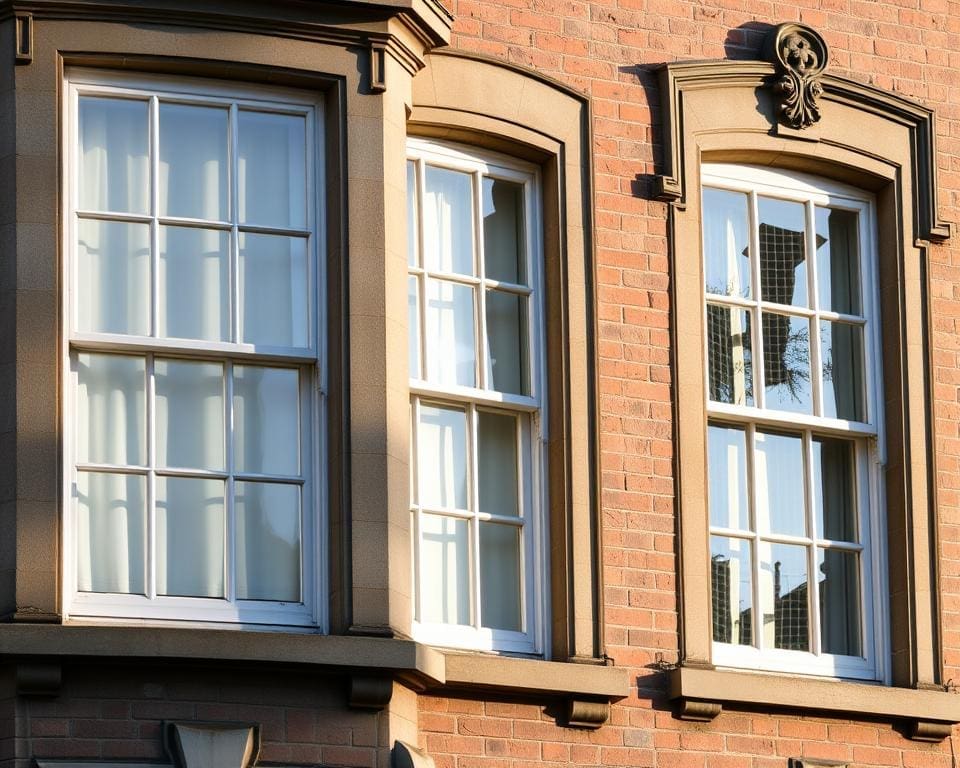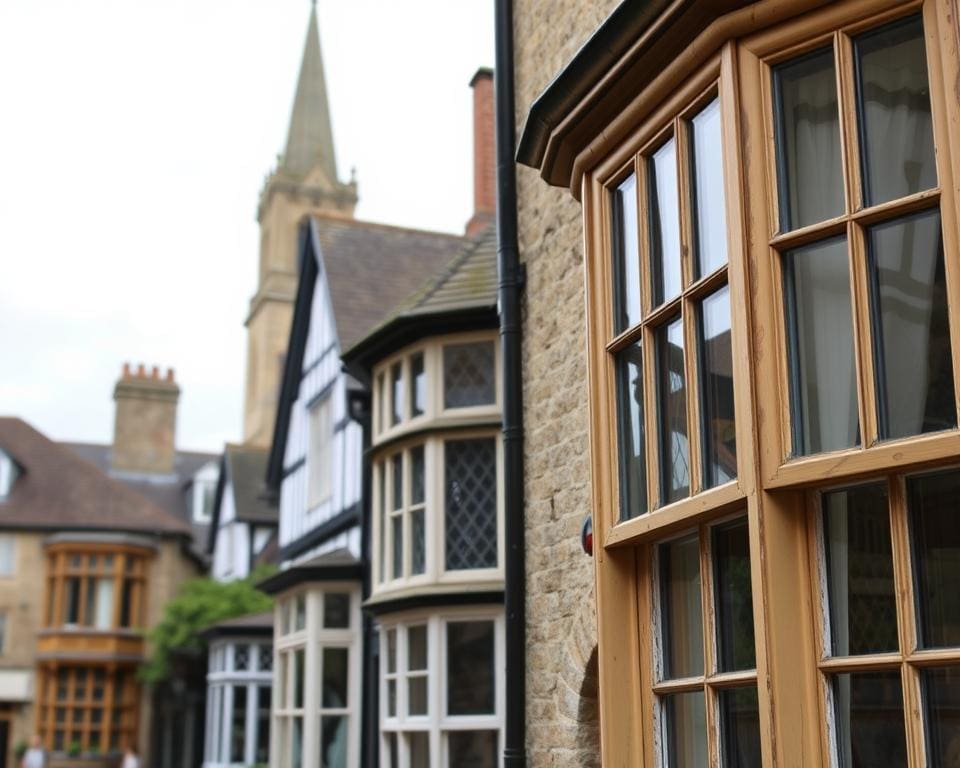Understanding the regulations surrounding windows in conservation areas is vital for anyone living in these historically rich locales. These special designations, established by local councils, aim to protect the architectural integrity and historical value of buildings within defined boundaries. So, what are the rules for windows in English conservation areas? These guidelines typically involve strict controls over the style, materials, and maintenance techniques that must be employed to ensure that any renovations or restorations align harmoniously with the character of the area. For homeowners considering modifications, being informed about these regulations is essential to maintaining both the aesthetic and historical essence of their properties.
Understanding Conservation Areas
Conservation areas play a vital role in preserving the unique character and historical significance of specific neighbourhoods across the UK. Established through a formal designation process, these areas are identified based on their aesthetic and architectural value. The aim is to protect and enhance the features that define their charm, ensuring that any changes made respect the area’s heritage.
One of the key aspects of conservation areas is adherence to strict guidelines. These conservation area guidelines windows stipulate how modifications should be undertaken to maintain the overall visual integrity. Windows, in particular, hold significant importance, as they contribute not only to the style of the property but also to the broader streetscape.
Properties within conservation areas are subject to regulations known as historic district window rules. These rules outline what alterations can and cannot be made, typically favouring traditional styles and materials. By following these guidelines, property owners help to foster a sense of continuity and connection to the past.

The designation of conservation areas is guided by specific criteria, including architectural significance, historical context, and the need to protect distinct landscapes. This thoughtful process ensures that the character of these areas remains intact for future generations to appreciate. By understanding and respecting these principles, residents and developers contribute to the preservation of their community’s heritage.
What are the rules for windows in English conservation areas?
Understanding the specific regulations concerning windows within conservation areas is essential for homeowners. One of the primary rules is to maintain original window designs, an element that embodies the heritage of the property. Any modifications need to align with the stringent conservation area guidelines windows, often necessitating planning permission prior to any work undertaken.
Key factors to consider include the preservation of traditional materials, such as timber, which often characterise the architectural style of these regions. The type of glazing used, alongside the overall window style, remains critical in ensuring that any changes do not negatively impact the aesthetic value of the surroundings.
Before proceeding with any enhancements or replacements, it is crucial to consult with local authorities. They can provide guidance on the necessary approvals required, ensuring that the integrity of the conservation area remains intact. This diligence not only supports compliance but also fosters a deeper appreciation of the community’s historical significance.
Importance of Heritage Window Regulations
Heritage window regulations serve as a cornerstone for preserving the unique character of conservation areas across the United Kingdom. By adhering to these regulations, communities can maintain their historical appeal, fostering a sense of identity and pride among residents. The regulations are designed to protect not only the aesthetic value of buildings but also their cultural significance, ensuring that future generations can appreciate their historical context.
One of the primary roles of these regulations is to prevent the loss of original architectural features. Renovations or replacements must align with architectural conservation window standards, which help retain the distinctive elements that define the character of a neighbourhood. Such standards ensure that any changes made do not detract from the significance of historic buildings, preserving the visual harmony of the area.
Non-compliance with heritage window regulations can have negative repercussions on both local heritage and property values. When historical details are altered carelessly, it not only diminishes the building’s charm but may also lead to decreased interest from potential buyers. As such, homeowners are encouraged to familiarise themselves with these guidelines, safeguarding their properties and contributing to the overall integrity of their communities.
Key Features of Architectural Conservation Window Standards
The standards for architectural conservation windows play a vital role in preserving the character and integrity of historical buildings. These standards focus on ensuring that materials and techniques used are reflective of the original design, which is essential for maintaining the aesthetics of conservation areas.
One key feature lies in the selection of materials. Authentic timber, as well as traditional glazing methods, are often preferred for window restoration or replacement. Use of these materials ensures that the windows not only complement the building’s original style but also adhere to listed building window requirements.
Architectural conservation window standards also emphasise the importance of craftsmanship. Quality workmanship ensures that restoration efforts are visible yet seamless, allowing buildings to retain their historical significance. Techniques such as sash window restoration can highlight original features, which contributes to the building’s heritage and legacy.
Understanding what constitutes a listed building is crucial. These buildings require special attention due to their historical or architectural significance. Listed building window requirements mandate that any changes must be approved by local conservation officers, ensuring compliance with heritage guidelines.
Successful case studies demonstrate the effectiveness of these standards. Projects that adhere to architectural conservation window standards often result in aesthetically pleasing renovations that bolster the value of the property while preserving its historical characteristics. This balanced approach to restoration celebrates the past while ensuring relevance for the future.
Listed Building Window Requirements
Windows in listed buildings possess a distinctive character that reflects the architectural history and cultural significance of the structure. Understanding the listed building window requirements is essential for ensuring that any alterations honour the building’s heritage. Special permissions are often necessary to modify these windows, which differ substantially from those in non-listed buildings.
Local authorities typically evaluate proposed changes against conservation area guidelines windows, emphasising the need for compatibility with the existing style and materials. The following criteria are crucial for assessing the significance of listed building windows:
- Historical context: The age and original design of the window can provide insight into its importance.
- Construction materials: Authentic materials, such as timber and traditional glazing, should be retained or used in refurbishments.
- Architectural features: Unique elements like mouldings, sills, and ornamental details must be preserved to maintain the building’s character.
Engaging an expert in heritage conservation is advisable for homeowners embarking on window renovations. Selecting appropriate styles and materials that complement the building’s architectural essence not only adheres to listed building window requirements but also enhances the property’s value and appeal.
Preservation Area Window Policies
Preservation area window policies play a crucial role in maintaining the integrity of historic environments. These policies outline specific requirements for window management, ensuring that any modifications are thoughtfully considered. The guidelines in these areas often echo those found in conservation zones, yet they carry unique stipulations tailored to uphold the distinct character of their locales.
Window alterations within these jurisdictions frequently require pre-approval from local authorities. Homeowners must navigate the intricate process of submitting plans detailing proposed changes. Such measures safeguard the architectural heritage, encouraging the use of materials and styles that harmonise with the existing structure.
Regular maintenance recommendations accompany these policies. Homeowners are urged to prioritise the repair of original windows rather than replacement, as this preserves the historical essence of the property. The longevity of windows through upkeep reflects commitment to upholding preservation area window policies, allowing for an authentic connection to the past.
Understanding these historic district window rules is essential for anyone looking to renovate or maintain windows within these treasured environments. Adhering to established guidelines not only honours the heritage but also contributes positively to the community’s identity.
Common Misconceptions about Historic District Window Rules
Many property owners hold common misconceptions about window regulations that can lead to confusion and frustration when managing renovations or restorations. A prevalent myth is the belief that these regulations impose a complete restriction on making any changes to windows. In reality, historic district window rules offer guidelines that encourage preservation while allowing for some degree of flexibility.
Another misconception suggests that compliance with these regulations is a tedious and costly process. While it can seem daunting initially, understanding the requirements often reveals numerous options for improvement without sacrificing the historical value of the property. Here are some common myths dispelled:
- All window styles must remain unchanged; in fact, some alterations are permissible.
- Old windows cannot be repaired; restoration is often encouraged over replacement.
- Getting permission for minor changes is too complicated; many local councils provide straightforward processes for approvals.
By clarifying these misunderstandings, homeowners can feel empowered to undertake necessary improvements and honour their property’s historical significance. Embracing the true nature of historic district window rules can lead to enhancements that both boost aesthetic appeal and maintain heritage integrity.
Steps for Complying with Conservation Area Guidelines Windows
Complying with conservation area guidelines windows is an essential process for homeowners wishing to preserve the character and historical significance of their properties. The first step involves consulting with your local council, where you can gain valuable insights into specific regulations and any necessary permissions required for window alterations. Engaging with council representatives ensures that you receive tailored advice that aligns with the unique attributes of your conservation area.
Next, understanding documentation requirements is crucial. Homeowners should be prepared to submit detailed plans, including specifications and photographs of existing windows, when applying for permission. By familiarising yourself with the required documentation, you streamline the approval process and enhance your chances of compliance with window regulations.
Additionally, seeking professionals who specialise in heritage compliance can provide significant advantages. These experts are well-versed in local guidelines and can offer insightful recommendations on appropriate materials and design choices. Engaging their services not only facilitates a smoother renovation experience but also reinforces your commitment to maintaining the integrity of your community’s architectural heritage.









